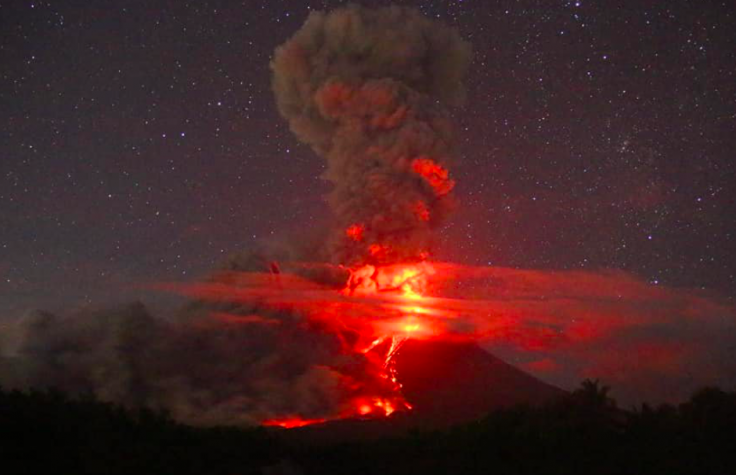Fears of a catastrophic volcanic tsunami have gripped thousands in the Philippines where a volcano is spewing lava and now warnings have been issued that an eruption is possible within hours or days.
The Taal is the second-most active volcano in the Philippines and it since Sunday turned active when it sent a cloud of ash miles into the air forcing thousands to evacuate their homes.
But by Monday, Taal started gushing volcano followed by tremors. Philippines volcanic institute has now warned of a potential "volcanic tsunami" in the lake that surrounds the Taal volcano, which is located on an island around 40 miles south of Manila in the Philippines' Batangas province.

The volcanic activity has affected more than 450,000 people living within the volcano's danger zone, the Official United Nations Office for the Coordination of Humanitarian Affairs (OCHA) said in a tweet.
In the last 500 years, the Taal volcano has erupted more than 30 times - the last time was in 1977.
What is a volcanic tsunami? Why is it so dangerous?
A volcanic tsunami can happen due to several reasons such as tectonic movement from volcanic activity, flank failure into a water source or pyroclastic flow discharge into the sea. Even violent submarine explosions can cause volcanic tsunamis.
The wave formed in the water then travels vertical gaining momentum traveling as fast as 650 miles per hour in deeper waters, while in shallow waters it reaches a speed of 200 miles per hour. The power doesn't decrease when they hit land though, and that is why 16.9 percent of volcanic fatalities occur from tsunamis. Five percent of tsunamis are triggered by volcanic activities as is a case in the Philippines.
At least three times in history, the volcanic tsunamis have wreaked havoc:
Krakatoa
The 1883 eruption of Krakatoa volcano in Indonesia killed over 36,000 people. The volcanic tsunami caused by the eruption of Krakatoa is listed as the most violent volcanic events in recorded history.
The volcanic eruption was 13,000 times more powerful than the Little Boy nuclear bomb that devastated Hiroshima, Japan, during World War II. The waves caused by volcanic tsunami grew to be as big as 40 meters tall. The statue of Christ that towers over Rio de Janeiro is 39.6m tall when you include the pedestal.
Mount Unzen
The 1792 eruption of Mount Unzen in Japan triggered a destructive landslide generating a 165-foot tsunami. The death toll from this catastrophic volcanic tsunami is estimated at over 15,000 human lives.
Thera
A volcanic tsunami destroyed the Minoan civilization at Akrotiri in Greece in 1490 BC. The eruption at the island of Thera (now called Santorini) was one of the largest volcanic events on Earth in recorded history.









